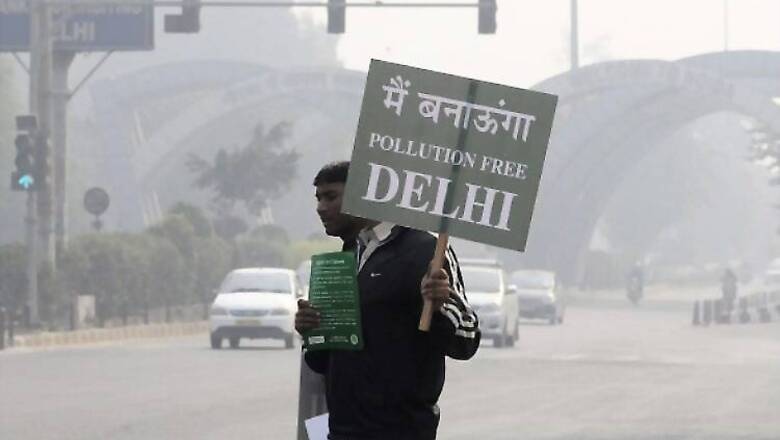
views
New Delhi: The first three working days after the end of the odd-even scheme saw rapid worsening of air quality with levels of fine particulate matter (PM2.5) registering a jump of more than 57 per cent on the first working day itself, according to an analysis by a green body.
Centre for Science and Environment (CSE) said that Delhi has lost the air quality gains of odd and even scheme and the delayed winter will make pollution worse if quicker steps are not taken to sustain the gains.
It urged the Delhi government to immediately roll out its plan for the remaining part of the winter season and reduce traffic volume on a more sustained basis and allow public transport to perform more efficiently as was possible during the odd and even week.
CSE also urged the government to implement the slew of orders which the Supreme Court gave yesterday including quick augmentation of bus and metro, stronger enforcement on diversion of truck traffic, closure notice on coal-based Badarpur Power Station power plant and serving notice to further advance implementation of Euro VI emissions standards for vehicles.
"The gains of odd and even scheme were immediately lost after full traffic was back on the first Monday after the scheme came to a close. This was further aggravated by lower wind speed. On January 18, the PM2.5 levels shot up by 57 per cent within the day and once again rose to 'severe' category.
"With an average city wide concentration of 277 microgram per cubic metre (cum), Delhi's air quality was back in 'severe' category. The PM2.5 levels continued to remain in the 'severe' category on Tuesday with the levels further increasing to 281 micro gram per cum.
"On Monday, pollution build up within the 24 hours was massive - by as much as 101 micro gram per cum. Despite being a windier day this was 35 per cent greater build up on January 18 than the highest observed during odd-even period - a jump of 75 micro gram per cum on January 11," the CSE analysis said.
CSE further said that this winter, out of all the severe smog episodes so far, the peak pollution during odd and even programme has been the lowest and this shows that despite hostile weather conditions - no wind, temperature dip and western disturbance - peak pollution during odd-even scheme was much lower.
"This validates the importance of emergency action. The fortnight, when the programme was implemented has clearly demonstrated that the peak pollution levels are lower than the normal smog peaks of the season - despite adverse weather conditions," said Anumita Roy Chowdhury, Executive Director, CSE.



















Comments
0 comment